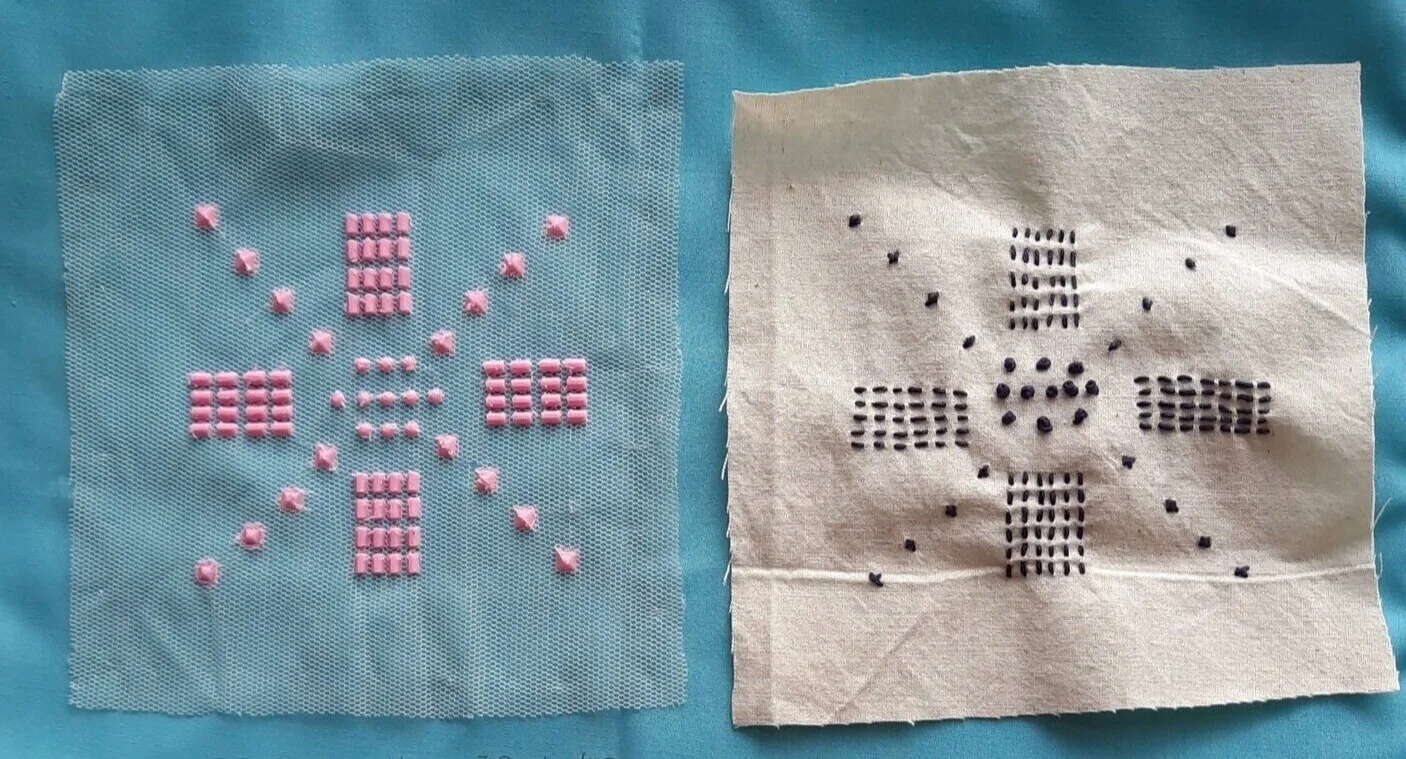3D Printing - The Future of Embroidery?
What is Embroidery?
Sewing has been associated with the female spheres of domesticity for the longest time. It is a word that usually conjures up images of women huddled together with needle and thread creating garments, stitching their stories onto pieces of fabric, taking out the hem of a garment or darning a sock. Sewing has also been used to create patterns on garments - embroidery. Through the generations, these patterns have been a) entirely functional; and/or b) purely for decorative or storytelling purposes. Either way, sewing was historically, an economic necessity, and this activity was only made possible with the invention of textile tools that we now take for granted. In fact, the discovery of prehistoric sewing needles in archaeological digs around the world, illustrates how important the needle and thread is for man, so much so that society has pushed for the technique to be mechanised - the invention of the traditional sewing machines during the Industrial Revolution, and then the computerised sewing machine which allows for embroidered patterns to be digitised.
This shift towards efficiency, and commercialization has brought about a change to the way we look at handsewn and handstitched products. In the past, sewing and embroidering garments has been about making it either for the creator or for someone close within the community; there was a sense of immediacy and intimacy, a reflection of the artisan’s skill on your body. With commercialization, however, this connection has been lost.
Use of Technology
How do we make embroidery relevant?
There are artisanal communities that embroider clothes by hand for designers who do not mind the time needed to make them. However, the computerised sewing machine and the advent of digitised embroidery patterns has meant designers can work faster and make do with less time to meet the demands of the fashion cycles and commercial market. Fashion designer, Alice Archer, noted “without the new technology, the old-fashioned method would make the whole process even slower and that without the software she would not be able to deliver the heavily embroidered 20-piece fashion collection each season.” Digitising has also made embroidery relevant for today’s market with the production of casual wear and corporate orders with embroidery, accessories and decorated embellishment production.
The use of 3D Printing
In my work for the showcase, “A Blip in Time” with National Library Singapore, I looked at the use of 3D printing on fabric as a tool for embroidery work. 3D printing works by extruding and adding layers of plastic material to create a pre-designed 3D object. This could potentially allow for the customisation of embroidery on garments. However, as an advocate of slowing down, I also use handstitching as a form of meditation to reconnect with myself and process the demands of daily life. In this piece of artwork, I compare the use of old (handstitch) and new technology (ie 3D printer) in the creation of embroidery on textiles, and question:
Whether new technology can mimic the meditative process of embroidery
Whether we are able to replicate and pass down generations of embroidery motifs using new technology,
Whether a person who uses new technology to create embroidered pieces can be called an artisan - would we be destroying the artisans role (or can we protect them), or are we creating better jobs?
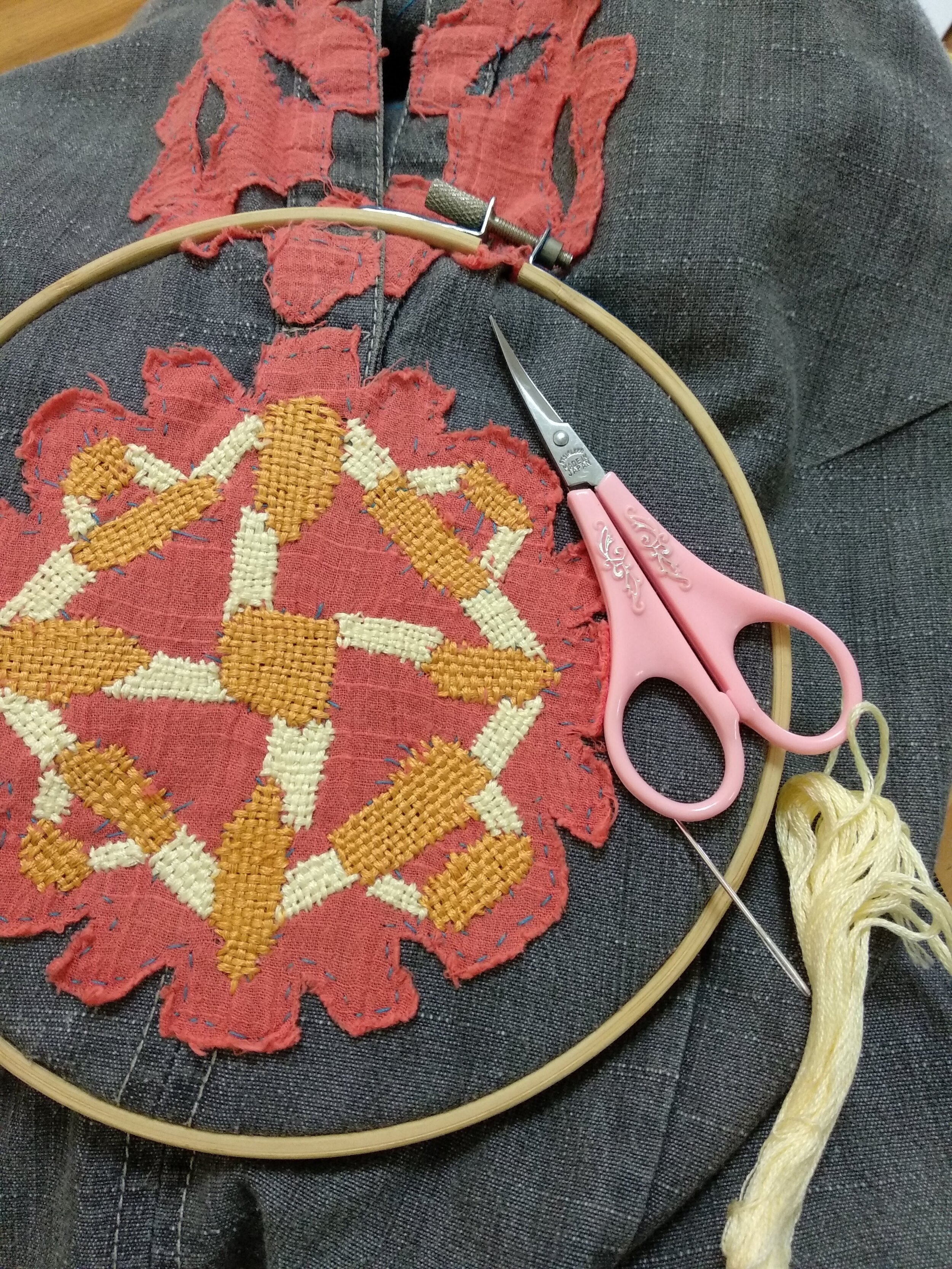
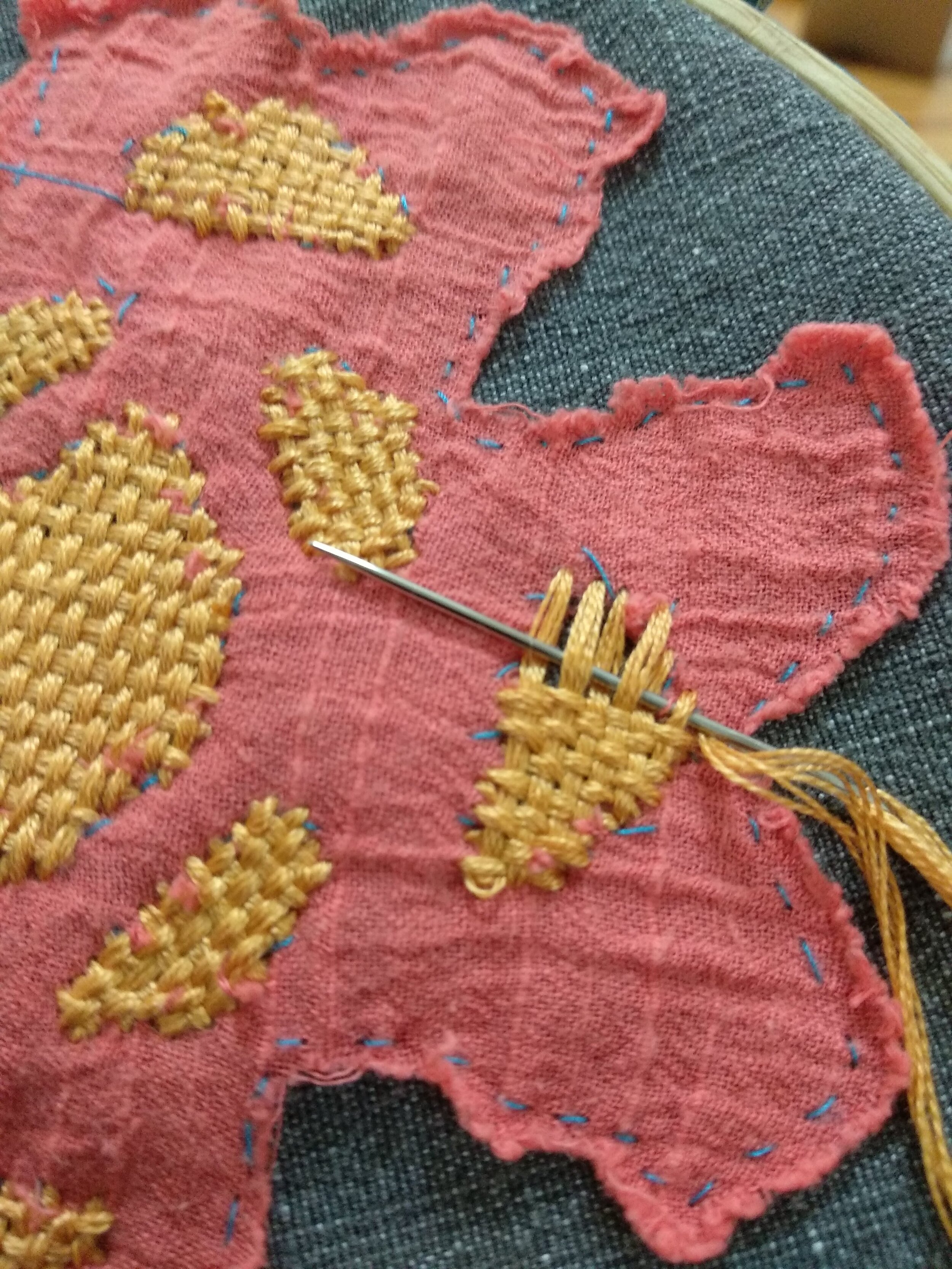
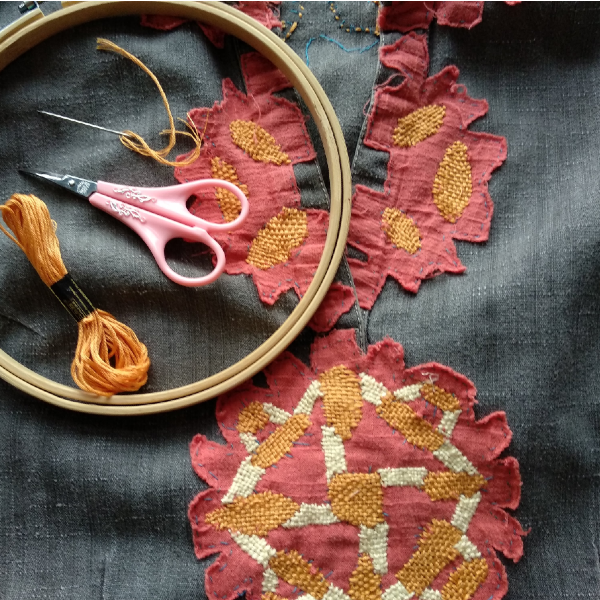
Use of 3D Printing In Replicating Embroidery - Learning Points
Over the period of February - March:
I looked at replicating the embroidery patterns I had designed for my dress (see picture Upcycled Dress with Embroidery) using 3D printing. The printer used was a Flash Forge Dreamer, with Polylactic acid (PLA) at Jurong Regional Library, MakeIt Space.
I compared the times taken to recreate the patterns on 3D printer and by hand. This resulted in a Library of Stitches and will be showcased during 1 - 14 April at Jurong Regional Library.
Limitations encountered:
As PLA is a plastic material, it could not be printed on natural fiber material (e.g. cotton, wool etc) unless the fabric was pre-cut into a mesh-like structure to enable the plastic material to stick. The alternative was to print on man-made fibers such as polyester tulle or organza. To provide maximum adherence to the fabric, the print was stopped after 0.6mm of printing before adding the fabric to the print bed and continuing with the rest of the print.
The embroidery design could not be fully replicated on the 3D printer -
The 3D print design was limited by the resolution of the printer and also the position of the nozzles. This resulted in the final design being a sparse representation of the original hand embroidered work:
Each “stitch” had to be at least 3mm in dimensions
The position and structure of the nozzles did not allow the “stitches” to be placed too close together (min of 2mm distance)
The size and position of the nozzles also prevented me from printing embroidery designs with different colour schematics.
Due to the size of the “stitches”, the 3D print speed could not be more than 20mm/sec. A faster speed would result in distorted “stitches” and more streaking across the work which required time to clean up (see images below). A speed of 20mm/sec meant that some of the stitch work was quicker when done by hand - it took roughly 1 hour 15 mins to finish printing the design below while it only took slightly less than that to embroider it by hand.
The 3D print required finishing to be done to remove any streaks or rough surfaces. This added roughly 15 mins of time onto each print.


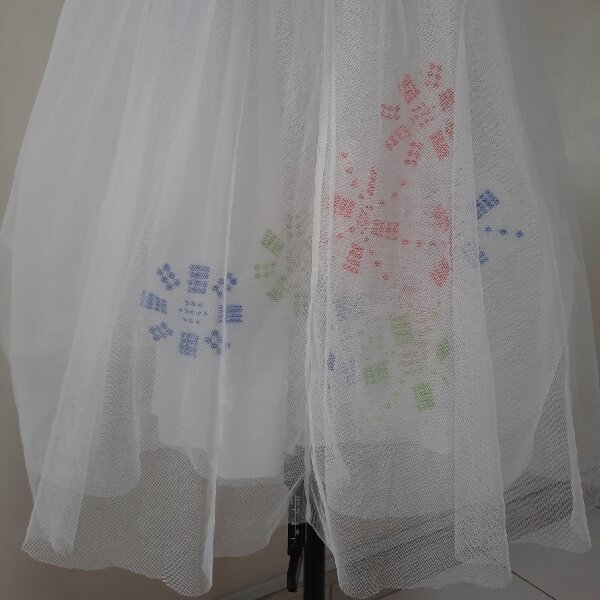
Advantages experienced
I had printed 21 pieces of 3D printed embroidered designs. This took approximately 32 hours in total (excluding time to troubleshoot and finishings).
Although, the 32 hours would be slightly more than the time needed to handstitch, a 3D printer does not get tired, and remember, it is likely that no one would be able to embroider for 32 hours straight. However, with 3D printing, I had lost the meditative feeling that I could attain while doing hand embroidery.
No handstitching meant my hands were well rested and not sore. Hand and arm muscle aches are a common occupational issue with hand embroiderers.
The prints were very accurate - all the prints were the same size and the “stitches” in the same position. However, this meant it had lost the handstitched charm.
Left 3D printed using 1 hour 15 mins. Right: Hand embroidered using 45 minutes.
So, back to the questions:
Can 3D printing mimic the meditative process of embroidery
Can we use 3D printing to replicate and pass down generations of embroidery motifs
Can a person who uses new technology to create embroidered pieces can be called an artisan too
As an artist, 3D printing provides an alternative means of creating a variety of forms to support my art practice. Although the technique frees up my time, it does not give me the same satisfaction from a meditative perspective, and in terms of the final product. If explored further, like digitised embroidery work, there could be potential to use it for commercial means. However, it should not be used to replace the artisan - the knowledge and skills associated with their techniques are passed on to future generations so that crafts can continue to be produced within their communities, providing livelihoods to their makers and reflecting creativity. What do you think?
Results of the project will be displayed at A Blip in Time (1 - 14 April 2021), Jurong Regional Library. Entry is free.
This project was supported by the National Arts Council and National Library Board, and is part of the Fertile Art Refinery group showcase, A Blip in Time (1 - 14 April 2021), Jurong Regional Library.


